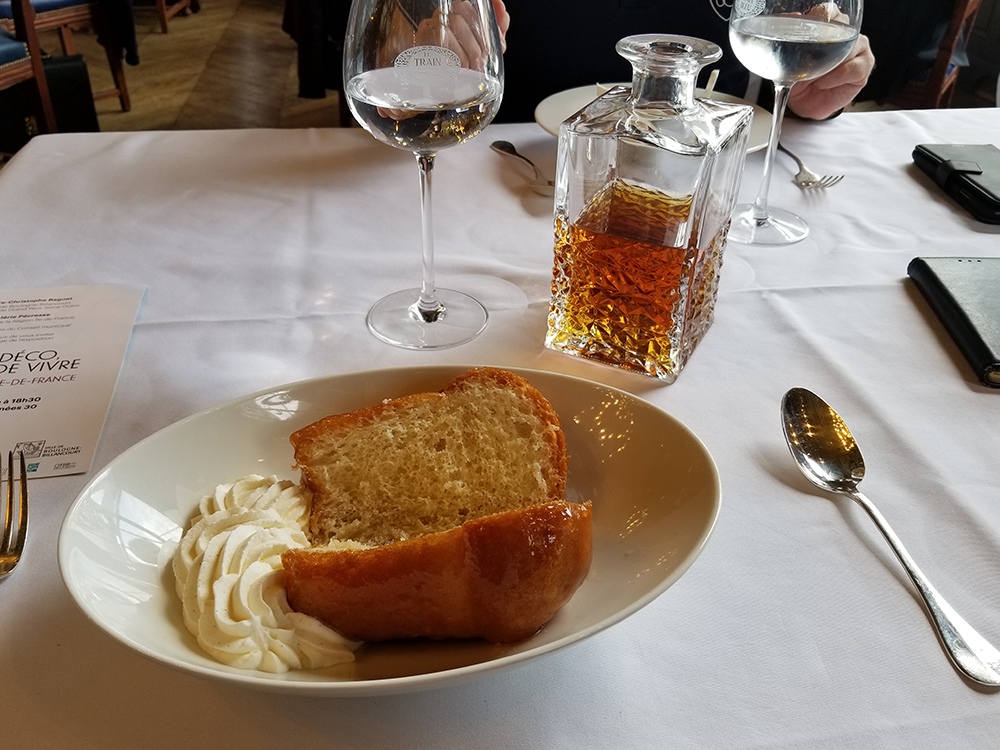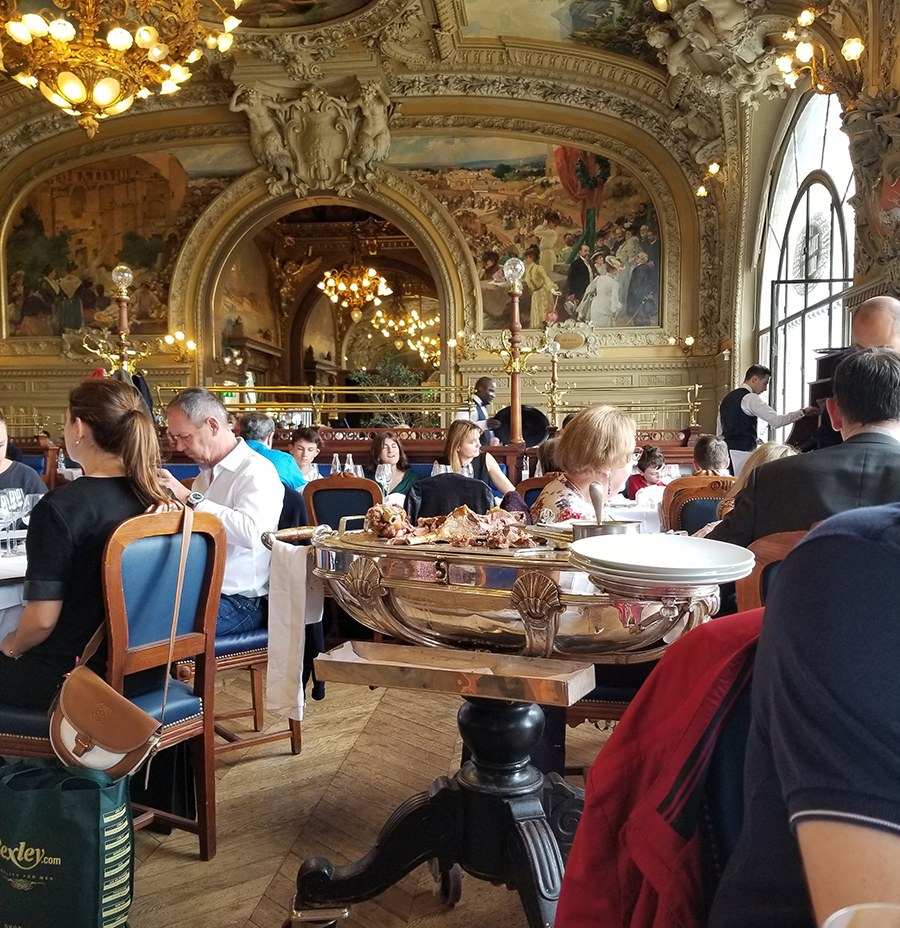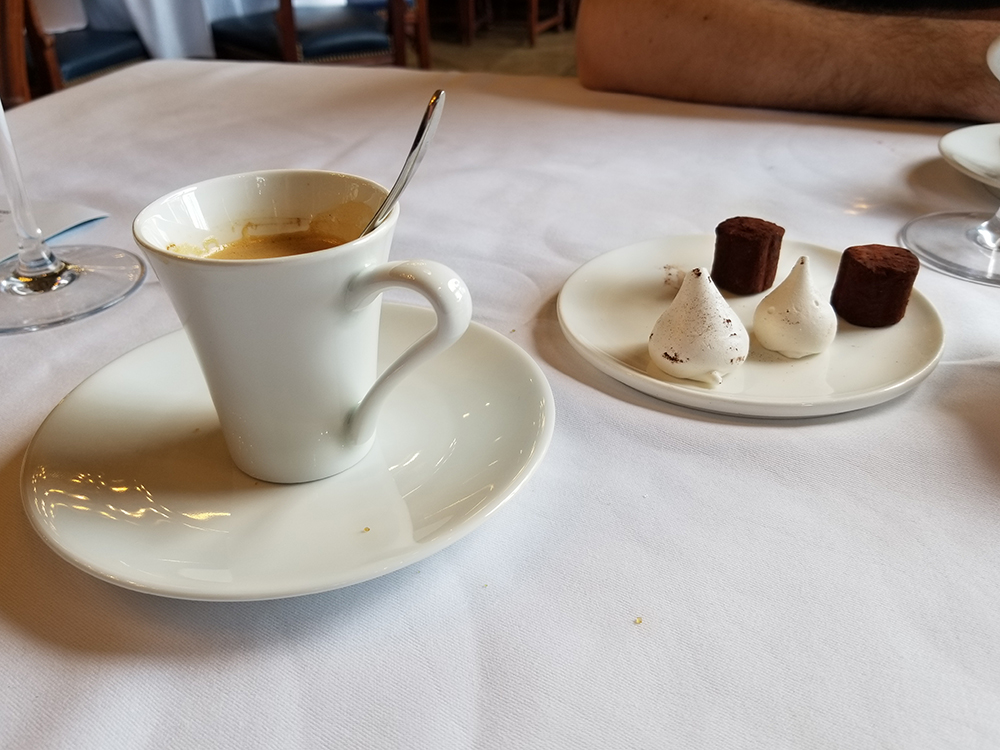 As a kid, I was fascinated by old ships. I would carve small wooden versions of Viking longboats, constructed a pretty detailed little paddle wheeler, and even made a small ocean liner complete with construction paper funnels. I also had that crazy, intense childhood love of trains.
As a kid, I was fascinated by old ships. I would carve small wooden versions of Viking longboats, constructed a pretty detailed little paddle wheeler, and even made a small ocean liner complete with construction paper funnels. I also had that crazy, intense childhood love of trains.
As an adult (for a few years now), I’ve been an avid collector of vintage European travel memorabilia, particularly items from the 1920s and 30s. I’ve bought rare menus, silver, and other beautiful items from many ocean liners and trains, but my most prized possession is a 1926 bronze Wagons-Lits monogram from an actual Orient Express sleeping car. (think “Murder on the Orient Express”)
So, on my last trip to Paris, I was delighted to find the perfect intersection of history and fine food at the historic restaurant Le Train Bleu.
This stunning restaurant, originally created in 1900 for the Paris Exposition, is prominently located on the upper floor in the hall of the Gare de Lyon train station.
The station today serves nearly ninety million passengers per year and is the third busiest in Europe, so it seems unusual that an ornate belle-epoch restaurant shares its space; however, its museum-quality decoration is definitely with purpose.
Original to its construction, the restaurant’s vast ceilings and walls are studded with fine paintings of the destinations that the train station has served via its many routes. The famous Orient Express to Istanbul, and the elegant Paris-Ventimiglia, “Blue Train” routes to the French and Italian Rivieras passed through or originated at the Gare de Lyon.
Forty-plus paintings grace the restaurant with scenes ranging from domed palaces and churches to idyllic French countryside moments. There are beautiful cliffside towns, many scenic harbors, and even an Arabic desert town. Many of these works were created by some of the best French artists of the time and would be considered important paintings on their own.
In 1972, the restaurant was classified as a “Monument Historique” and is now protected as a national heritage site.
In the current decade, wonderful things have happened to the restaurant. In 2014, the restaurant was renovated and restored; paintings and sculptures were cleaned and repaired (so much re-gilding), and the kitchens were modernized.
Most importantly, in 2018, two-star Michelin chef Michel Rostang of Paris’s Maison Rostang joined Le Train Bleu’s Chef Jean Pierre Hocquet in collaboration to elevate the menu to match its phenomenal surroundings.
Echoing the many regions of France in the restaurant’s paintings, Chef Rostang focused on traditional French cuisine, making use of marvelous seafood from the many coasts, excellent meats from its plentiful farms, and its wonderful regional cheeses.
 For most of its life, the restaurant was known as the “Buffet de la Gare de Lyon,” however, in 1963, the restaurant was renamed “Le Train Bleu” in honor of the luxury train route.
For most of its life, the restaurant was known as the “Buffet de la Gare de Lyon,” however, in 1963, the restaurant was renamed “Le Train Bleu” in honor of the luxury train route.
Though its origins go back to the mid-1880s, the Calais-Méditerrannée Express had its heyday between the early 1920s and the mid-1930s, shuttling the rich and famous to the beautiful coastal cities of Nice, Cannes, Monte Carlo, Menton and Ventimiglia (Italy).
From 1922 on, the train was composed exclusively of first-class steel carriages (S-Cars) with the sleeping cars painted a dark blue with gold details. A British advertisement is actually credited with furthering the name of the train with a poster that promoted taking ‘A New Blue Train to the Côte d’Azur.’ (The train route officially became Le Train Bleu only after WW II)
Because of its destinations, the route had always attracted a wealthier clientele; Coco Chanel, F. Scott Fitzgerald, Winston Churchill, and (Edward) The Prince of Wales were frequent guests on the train.
Like its famous cousin, Le Train Bleu has also been featured in novels, including Agatha Christie’s 1928, “The Mystery of the Blue Train,” and another popular detective story, “Mon Ami Maigret” by Georges Simenon. Interestingly, there is even a Ballets Russes ballet – Le Train Bleu.
Because of its unique splendor, the current restaurant has been featured in many movies, including the crime thriller “Nikita” by Luc Besson and Place Vendôme, which starred Catherine Deneuve. (And, though it pains me to say it, it was featured in Mr. Bean’s Holiday.)
Very much unlike Mr. Bean’s holiday, I was in Paris to visit friends, eat to excess, and see an amazing ‘Ile de France’ ocean liner exhibit.
We met our friend Arnaud (who’s perfect idea this was) in the busy concourse of Gare de Lyon at mid-day, and we went up the stairs into the jaw-dropping place.
The scale of the restaurant is the first thing that hits you – its ceilings are twenty-four feet high created by ornate arches in both directions. There’s a vast array of carvings – muses, cherubs, and cartouches all embellished with a profusion of gilded leaves and swags. The several one-ton bronze chandeliers look like golden trees hanging from the ceiling.
We were initially greeted by a porter dressed in vintage train livery and then presented to the hostess to confirm our reservations and preferred language of menus.
The restaurant is oddly very busy and calm at the same time. It’s an ocean of tables in pristine white linens, broken by long rows of banquettes and chairs upholstered in a beautiful blue. Natural light pours in from the massive arched windows along the full length of the restaurant’s main rooms.
We were seated and again greeted professionally by an extremely dapper waiter in a dark suit.
A few options were discussed, and a menu in French was retrieved for Arnaud.
As would be expected, the choices on the full menu made the decision very difficult. Starters of Scottish salmon, Burgundy-style escargot with parsley butter, Duck foie gras terrine, “Cushions of scallops,” entrees of Pike, Turbot, Roasted leg of lamb – carved table-side, Duckling Roannaise, Chicken and veal sweetbread vol-au-vent were available – basically, a list for a foodie died and gone to heaven…
I elected to get the PLM fixed menu – 3 courses paired with wine. The menu options featuring regional produce from the southwest of France along the PLM (Paris-Lyon-Marseille) route.
As a starter, I received a gorgeous duck and duck foie gras pâté en croûte accompanied by a Provence fig chutney, and toasted hazelnuts. The pâté slice was large, earthy good, and the best one in a week of many to compare. The sweet notes from the fig and nutty hazelnuts were a joy. It was well paired with a mildly sweet Gewürztraminer.
 The main course was a cloud-white piece of steamed cod served with tiny carrots, broccoli fleurettes, and haricot vert. It was served with a dish of bright saffron aioli on the side.
The main course was a cloud-white piece of steamed cod served with tiny carrots, broccoli fleurettes, and haricot vert. It was served with a dish of bright saffron aioli on the side.
The surprise here was the addition of “bulots,” or sea snails – different from escargot, but no less delicious with the garlic in the sauce.
I requested a favorite Sancerre to accompany the Cod and was told (happily) that it was a good choice.
White one of my companions selected the Cod entrée as well, the other opted for the Guinea hen. His entrée was served with an artful array of carrots and tiny tomatoes in a perfect looking sauce.
My dessert selection was a house specialty – a baba au rum. A large popover shaped cake was placed before me, and with a quick motion, the waiter split it neatly down the middle. He then proceeded to flood the cake with half the rum from a decanter, which he then left on the table. Together with the whipped cream on the side of the plate, it was a challenge, but eventually, all gone.
Nearly three blissful hours later, we sat and enjoyed strong coffee and little tiny sweets from the chef until it was time to say goodbye.
In an article I did a few years ago on the wonderful Austin restaurant, Chez Nous, I lamented that after such an iconic French meal, it was a great pity that Paris itself was not waiting just outside.
Happily, this time, it was.
By Richard Arebalo
OTL Features Editor